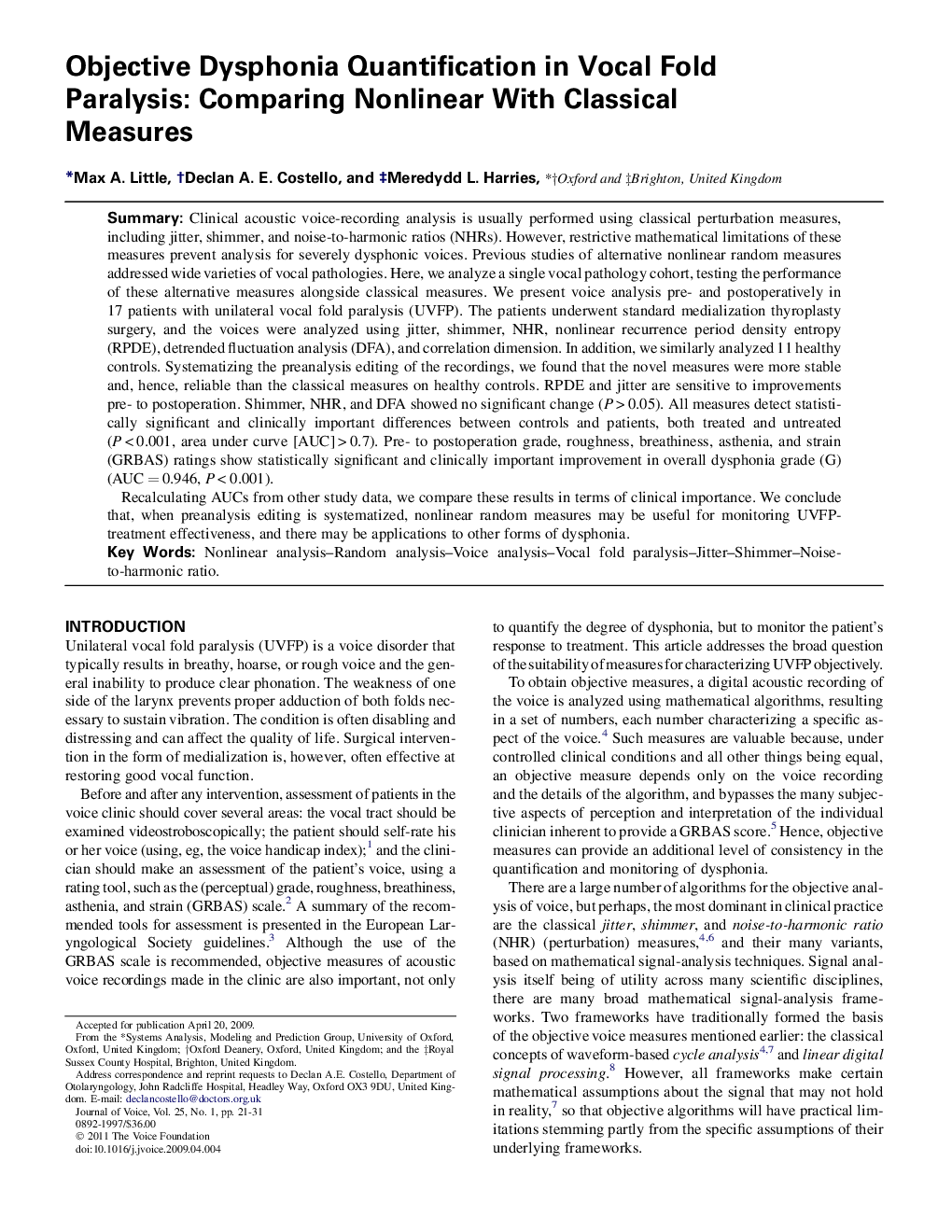| کد مقاله | کد نشریه | سال انتشار | مقاله انگلیسی | نسخه تمام متن |
|---|---|---|---|---|
| 1102614 | 953610 | 2011 | 11 صفحه PDF | دانلود رایگان |

SummaryClinical acoustic voice-recording analysis is usually performed using classical perturbation measures, including jitter, shimmer, and noise-to-harmonic ratios (NHRs). However, restrictive mathematical limitations of these measures prevent analysis for severely dysphonic voices. Previous studies of alternative nonlinear random measures addressed wide varieties of vocal pathologies. Here, we analyze a single vocal pathology cohort, testing the performance of these alternative measures alongside classical measures. We present voice analysis pre- and postoperatively in 17 patients with unilateral vocal fold paralysis (UVFP). The patients underwent standard medialization thyroplasty surgery, and the voices were analyzed using jitter, shimmer, NHR, nonlinear recurrence period density entropy (RPDE), detrended fluctuation analysis (DFA), and correlation dimension. In addition, we similarly analyzed 11 healthy controls. Systematizing the preanalysis editing of the recordings, we found that the novel measures were more stable and, hence, reliable than the classical measures on healthy controls. RPDE and jitter are sensitive to improvements pre- to postoperation. Shimmer, NHR, and DFA showed no significant change (P > 0.05). All measures detect statistically significant and clinically important differences between controls and patients, both treated and untreated (P < 0.001, area under curve [AUC] > 0.7). Pre- to postoperation grade, roughness, breathiness, asthenia, and strain (GRBAS) ratings show statistically significant and clinically important improvement in overall dysphonia grade (G) (AUC = 0.946, P < 0.001).Recalculating AUCs from other study data, we compare these results in terms of clinical importance. We conclude that, when preanalysis editing is systematized, nonlinear random measures may be useful for monitoring UVFP-treatment effectiveness, and there may be applications to other forms of dysphonia.
Journal: Journal of Voice - Volume 25, Issue 1, January 2011, Pages 21–31